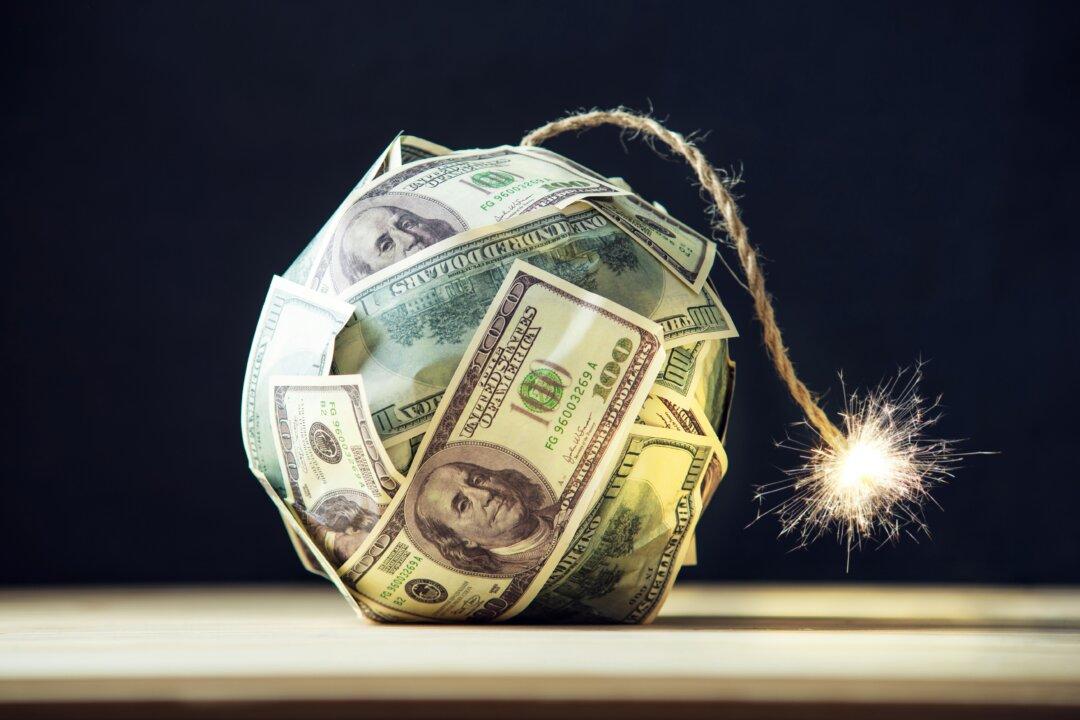“Year-ahead inflation expectations were unchanged this month at 3.3 [percent], above the 2.3–3.0 [percent] range seen in the two years prior to the pandemic,” a University of Michigan statement reads.
“Long-run inflation expectations inched up from 3.0 [percent] last month to 3.1 [percent]” in June, significantly above the “2.2–2.6 [percent] range seen in the two years pre-pandemic.”
This survey indicates how weak the U.S. economy is and how consumers are feeling the persistent inflation.
We must remember that the Inflation Reduction Act has perpetuated inflation, as unnecessarily aggressive fiscal policy sabotaged the Federal Reserve’s decision to reduce the quantity of money in the system. The federal deficit is fueling inflation and keeping the CPI measure above the level where it should have been for at least 12 months.
Neo-Keynesians frequently point to the path of disinflation as a triumph of the soft-landing approach: The economy didn’t enter a recession, unemployment is low, and prices are cooling gradually. There is an evident counterargument to this optimistic view. The U.S. economy would have recovered faster, and consumers wouldn’t have suffered flat real wage growth, a loss of purchasing power, and crippling debt. The idea that government spending has strengthened the economy has no merit. The unsustainable deficit, rising taxes, persistent inflation, and weaker productivity growth are directly caused by excessive government intervention.
Both the labor participation rate and employment-to-population ratios remain below pre-pandemic levels. Real wage growth has been almost flat for years. Inflation is a hidden tax, and it has worsened the recovery path of the United States. Inflation has been perpetuated by deficit spending.
The U.S. consumer has been adding debt to maintain consumption, and credit card debt has reached new record levels. This isn’t a strong economy.
The problem is that the economy is weakening in the middle of an enormous fiscal expansion, and debt continues to rise at an alarming pace, while interest expenses reach new highs. Keynesian policies have weakened the fabric of the private sector and small and medium-sized businesses.
The discontent we are seeing in all developed countries is typical. Governments have focused on inflating headline macro figures, forgetting the average consumer and small businesses. Large corporations have been able to navigate these incorrect policies because of their financial muscle. However, families and small businesses are living a Keynesian nightmare: employed yet impoverished, while businesses struggle to stay afloat. So what is the problem? The imbalances in the public sector will generate less growth, higher taxes, and more challenges in the future. Public debt isn’t a tool for growth; it is a burden.
There have been a few comments in financial papers stating that the consumer confidence reading may come from negative analysis on social media.
Blaming negative economic news makes no sense. The Consumer Sentiment Survey was at an all-time high in 2019, a period when there was general media negativity regarding the economy and the administration. Inflation and higher taxes are more likely reasons why consumers are depressed. Even the gross domestic income (GDI) figure shows that things aren’t as solid as the government thinks.
If we look at the discrepancy between GDP and GDI, or the difference between the unemployment rate and labor force participation, as well as real wages compared with nominal readings, we can understand why citizens are unhappy. Bloating GDP with debt always ends badly.







